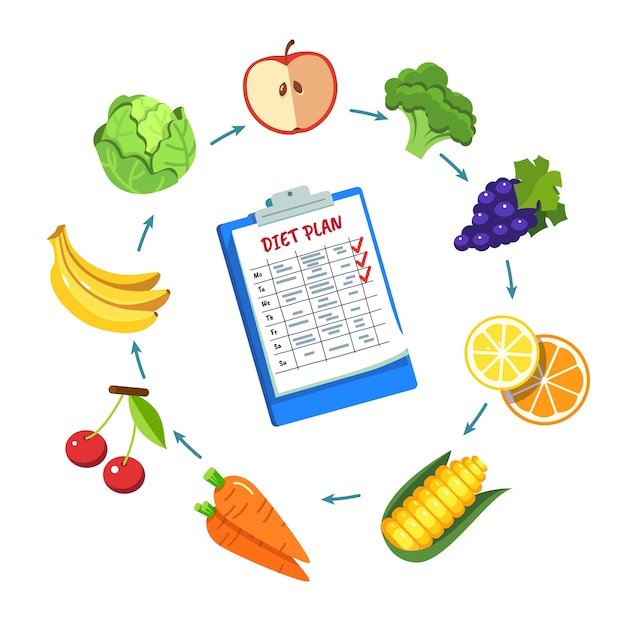
Introduction
The Specific Carbohydrate Diet, popularly known as the SCD Diet, is a dietary approach designed to address various digestive disorders and promote gut health. It focuses on eliminating specific carbohydrates that may be challenging to digest and cause inflammation in the gut. By following a carefully curated food list, individuals can experience relief from symptoms and improve their overall well-being. In this article, we will delve into the details of the SCD Diet food list and understand its benefits.
Getting Started with the SCD Diet
1. What is the Specific Carbohydrate Diet (SCD)?
The SCD Diet was first introduced by Dr. Sidney V. Haas in the 1920s and gained popularity through the work of Elaine Gottschall, who wrote the book “Breaking the Vicious Cycle.” It is primarily intended to help individuals with digestive disorders such as Crohn’s disease, ulcerative colitis, celiac disease, and irritable bowel syndrome (IBS).
2. The Purpose of the SCD Diet
The main goal of the SCD Diet is to reduce the intake of complex carbohydrates and disaccharides, which can be challenging for some individuals to digest. By eliminating these hard-to-digest carbohydrates, the diet aims to create a gut environment that discourages harmful bacteria and promotes the growth of beneficial bacteria.
3. Understanding the Importance of SCD Diet Food List
The SCD Diet food list plays a pivotal role in the success of this dietary approach. It categorizes foods into those that are permitted and those that should be avoided. This list acts as a guide for individuals to make informed choices while planning their meals.
The SCD Diet Food List
1. Permitted Foods
- Lean Proteins: High-quality protein sources such as poultry, fish, eggs, and lean cuts of meat are allowed on the SCD Diet.
- Fresh Fruits (in moderation): Certain fruits that are low in complex carbohydrates, such as apples, bananas, and blueberries, can be consumed in moderation.
- Vegetables (excluding certain types): Non-starchy vegetables like spinach, carrots, and zucchini are considered safe, while vegetables like potatoes and legumes should be avoided.
- Nuts and Seeds: Almonds, pecans, sunflower seeds, and other nuts and seeds are permitted on the SCD Diet.
- Healthy Oils and Fats: Olive oil, coconut oil, and avocado oil are some examples of fats allowed on the SCD Diet.
- Homemade Yogurt (fermented for 24 hours): Homemade yogurt made from specific strains of bacteria is a staple in the SCD Diet and aids in gut healing.
2. Foods to Avoid
- All Grains and Gluten-containing Products: Wheat, barley, oats, and all products made from these grains are strictly prohibited.
- Most Dairy Products: Except for homemade yogurt, dairy products like milk, cheese, and butter are off-limits on the SCD Diet.
- Processed Foods and Sugars: Processed foods, sugary snacks, and sweetened beverages should be avoided.
- Certain Vegetables and Legumes: Vegetables like corn and legumes such as lentils and chickpeas are not allowed due to their high carbohydrate content.
- Starchy Foods and Tubers: Potatoes, yams, and other starchy vegetables are to be excluded from the diet.
Benefits of the SCD Diet
1. Managing Digestive Disorders
The SCD Diet has shown promising results in managing symptoms of digestive disorders like Crohn’s disease and ulcerative colitis. By reducing the intake of complex carbohydrates, the diet reduces the strain on the gut and provides relief from inflammation.
2. Reducing Inflammation and Improving Gut Health
Inflammation in the gut can lead to various health issues, including digestive problems and compromised immune function. The SCD Diet’s emphasis on gut-friendly foods helps in reducing inflammation and fostering a healthy gut environment.
3. Supporting Weight Management Goals
The SCD Diet’s focus on whole, unprocessed foods can also contribute to weight management efforts. By promoting a balanced diet and eliminating empty calories, the diet supports healthy weight maintenance.
Tips for Success on the SCD Diet
1. Meal Planning and Preparation
Planning meals in advance and preparing homemade dishes can make it easier to adhere to the SCD Diet. Having SCD-friendly snacks on hand can also prevent the temptation of reaching for prohibited foods.
2. Staying Hydrated
Adequate hydration is essential for overall health and digestion. Drinking plenty of water throughout the day supports the body’s natural detoxification processes.
3. Managing Social Situations and Dining Out
Navigating social events and dining out while following the SCD Diet can be challenging. However, communicating your dietary restrictions to friends and family can help create a supportive environment.
4. Dealing with Challenges and Setbacks
Transitioning to a new diet can come with challenges, and it’s essential to be patient with oneself. If setbacks occur, it’s crucial to analyze and make adjustments to the diet plan accordingly.
FAQs: Frequently Asked Questions about the SCD Diet
1. Can the SCD Diet help with conditions other than digestive disorders?
While the SCD Diet is primarily designed for digestive disorders, some individuals have reported improvement in other conditions like autism and autoimmune diseases. However, it’s essential to consult a healthcare professional before starting the diet for conditions other than digestive issues.
2. How long should I follow the SCD Diet to see results?
The duration for seeing noticeable improvements can vary from person to person. Some individuals may experience relief within a few weeks, while others might require several months to witness significant changes. Consistency and adherence to the diet play a crucial role in achieving positive outcomes.
3. Is it essential to prepare homemade yogurt for the SCD Diet?
Homemade yogurt is a critical component of the SCD Diet, as it contains beneficial probiotics that support gut healing. Store-bought yogurts often contain additives and sugars that are not suitable for the diet. Therefore, it’s recommended to prepare yogurt at home using specific SCD-friendly strains of bacteria.
4. Can I reintroduce restricted foods after following the SCD Diet?
After following the SCD Diet for a substantial period and experiencing improved gut health, some individuals might attempt to reintroduce restricted foods. It is crucial to do this gradually and monitor how the body responds to each reintroduced food.
5. What are some alternative flours allowed on the SCD Diet?
For baking and cooking purposes, individuals on the SCD Diet can use alternative flours like almond flour, coconut flour, and cassava flour. These flours are grain-free and comply with the diet’s guidelines.
Conclusion
The Specific Carbohydrate Diet offers a promising and natural approach to improving gut health and managing digestive disorders. By adhering to the carefully crafted SCD Diet food list and incorporating helpful tips for success, individuals can embark on a journey toward better health and well-being. Remember, each person’s experience may vary, and seeking guidance from healthcare professionals is vital to tailoring the diet to individual needs and goals.







